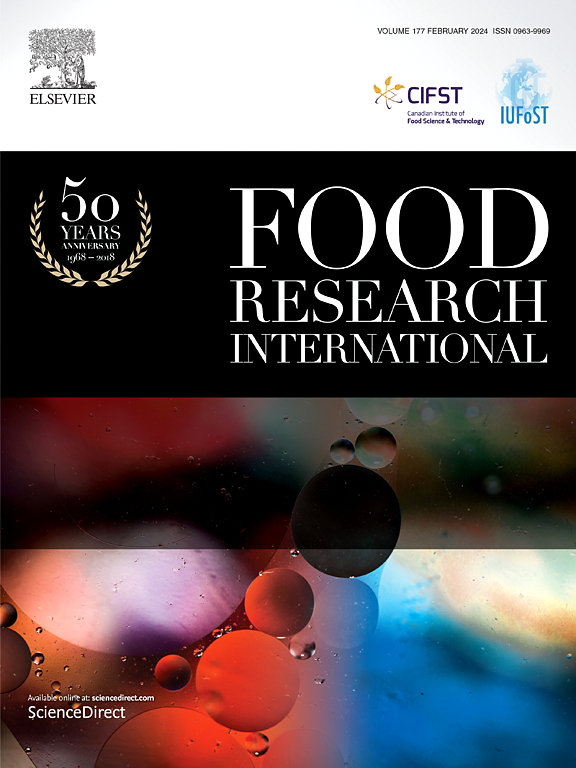Dynamics in microbial communities and flavor characteristics before and after the end-point of Zhenjiang aromatic vinegar fermentation revealed by macro-transcriptomics and metabolomics
IF 7
1区 农林科学
Q1 FOOD SCIENCE & TECHNOLOGY
引用次数: 0
Abstract
Multi-strain microbial fermentation plays an important role in the formation of rich flavor of cereal vinegar, but it also brings challenges to the control of fermentation process and the judgment of fermentation end point. In this study, the differences of microbial community structure and metabolites composition in fermented grains (termed CuPei in Chinese) of Zhenjiang aromatic vinegar before and after acetic acid fermentation were compared. First, the physical and chemical indicators of CuPei during acetic acid fermentation of Zhenjiang aromatic vinegar were used to identify the fermentation endpoint. Second, the changes of metabolites in CuPei before and after the fermentation endpoint were investigated using metabolomics. A total of 43 differentially expressed metabolites were identified, including 18 esters, 9 acids, 2 alcohols, 5 ketones and 3 aldehydes. Hereinto, formamide, pyrazine and dibutylphthalate were the key intermediate metabolites. Furthermore, five species, including Komagataeibacter sp., Limosilactobacillus panis, Lactobacillus acetoolerans, Limosilactobacillus pontis and Acetilactobacillus jinshanensis were identified as key functional microorganisms involved in the production of these unique metabolites by metatranscriptomics. These findings improve our understanding of the relationship between microbial succession and flavour formation in the acetic acid fermentation process of Zhenjiang aromatic vinegar, thereby improving the accuracy of judging the fermentation endpoint of Zhenjiang aromatic vinegar, and improving the flavour quality of the product.

求助全文
约1分钟内获得全文
求助全文
来源期刊

Food Research International
工程技术-食品科技
CiteScore
12.50
自引率
7.40%
发文量
1183
审稿时长
79 days
期刊介绍:
Food Research International serves as a rapid dissemination platform for significant and impactful research in food science, technology, engineering, and nutrition. The journal focuses on publishing novel, high-quality, and high-impact review papers, original research papers, and letters to the editors across various disciplines in the science and technology of food. Additionally, it follows a policy of publishing special issues on topical and emergent subjects in food research or related areas. Selected, peer-reviewed papers from scientific meetings, workshops, and conferences on the science, technology, and engineering of foods are also featured in special issues.
 求助内容:
求助内容: 应助结果提醒方式:
应助结果提醒方式:


